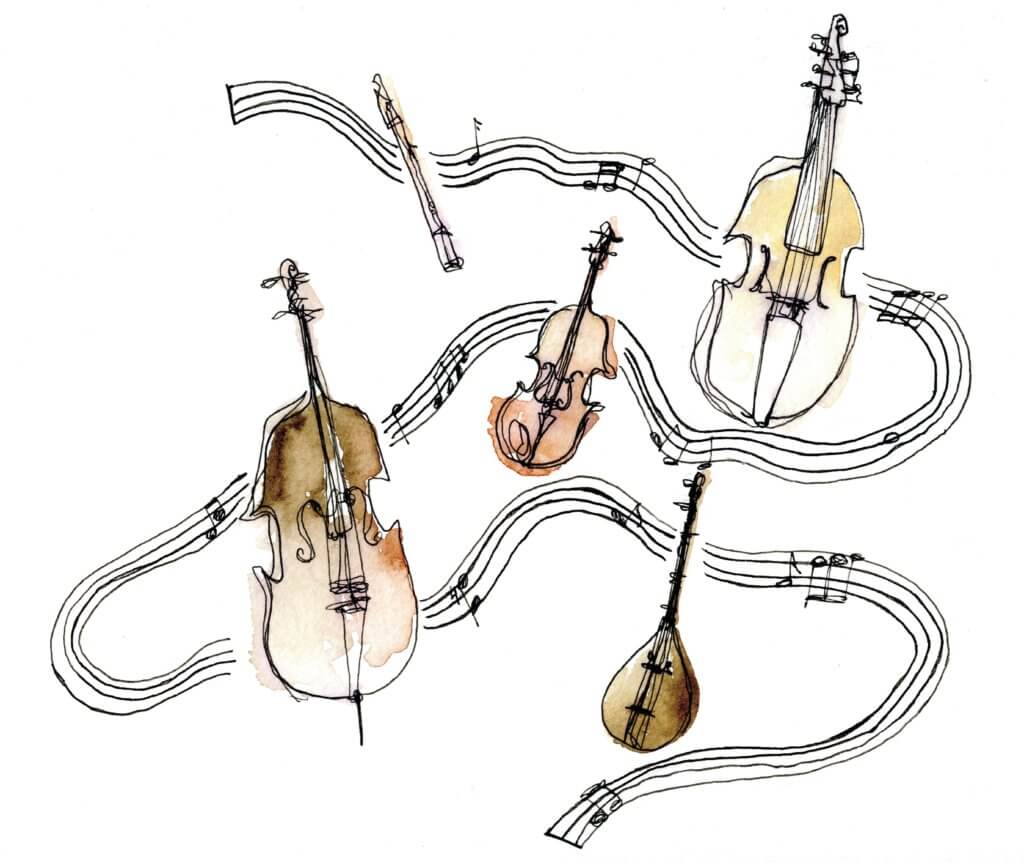Many familiar musicians perform in annual weekend of early music at Mt. A

This past weekend, the Mount Allison department of music welcomed guest musicians for the 15th annual Festival of Early Music in Sackville. The performers, many of whom performed on period-based instruments, included several ensembles who were returning to the Sackville Festival of Early Music scene.
The weekend opened on Friday with Les Boréades, featuring guest soprano Suzie LeBlanc, all of whom have participated in the festival in previous years. Their wealth of experience and expertise performing their repertoire was immediately evident as they executed their performance with skill.
One of the major works in the first half of Friday’s performance was Nicolas Clérambault’s Cantata Orphée, a setting of the tragic story of Orpheus. LeBlanc sang and conveyed the story well, with clear facial expressions, as well as crisp final consonants signifying various moods. The transitions and shifts in emotions between the changing musical sections were effective during the numerous recitatives and airs.
The second half of their performance was all Scottish airs, which explored different combinations of the instruments accompanying LeBlanc. For example, in Francesco Barsanti’s Three Scottish Airs for transverse flute, violin and continuo, the violoncello and harpsichord were beautifully paired in their duets with each other. LeBlanc beautifully sang throughout the various airs in the second half, although her text was much more clear in the first half.
“I thought Les Boréades and Suzie LeBlanc were technically very good but they also seemed very disengaged from the audience,” said Christina Acton, a second-year voice student.
The following night was completely different, with another two ensembles that have performed in the festival before collaborating together: Constantinople and Ensemble Caprice. The combination of the setar, kanun, oud, percussion, recorders, vielle and voices was immediately striking.
The concert, titled Près du Soleil (Near the Sun) was structured into eight segments. There were four segments in each half of the performance, with seamless transitions between each set of works as the percussionist lightly struck a small gong to indicate the beginning of a new segment.
The way that the two groups were positioned had Constantinople on one side of the stage and Ensemble Caprice on the other, which I found worked perfectly in terms of how each group contributed to the collective sound. I found that Ensemble Caprice provided a more melodic role to the texture, whereas the Constantinople was more percussive in nature.
Many of the works on Saturday evening were pattern-based and featured lots of repetition of musical motifs. Varying instrumentation amongst the abundance of instruments kept the performance engaging both to watch and listen to.
The second half was particularly exciting, highlighted by a thrilling tambourin solo in the final piece, Dança amoroso / Trotto from the 14th century.
“All of the original pieces in Saturday evening’s concert were amazingly arranged, with the transitions between Persian and western music so fluid and smooth,” said Rowan White, a first-year voice student.
The final concert on Sunday afternoon was equally enjoyable, featuring David Greenberg on the baroque violin and David McGuinness as the keyboardist. Their performance added a twist to the usual conception of early music grouped in “classical music”: normally listeners expect works from the Middles Ages, Renaissance and baroque era in an early music performance. This concert featured a wide range of works from a wide span of centuries of influence stemming from the Baroque era. Some J.S. Bach was indeed included, although it was uniquely paired with more recent works, as well as strathspeys, reels and jigs.
The virtuosic nature of the works made this concert fun. Greenberg and McGuinness performed many of their high-energy pieces from memory and clearly showcased the baroque violinist in the spotlight. McGuinness made things even more engaging for the audience by stepping away from the harpsichord and piano and pulling out a melodica for Ellun sotiisi by Arto Jarvela, which he used to serenade audience members in the aisles with its fun and spirited sound.
Every performance was interesting and engaging in its own unique way. At Friday night’s and Sunday afternoon’s concerts, the performers took turns speaking about the works they performed. In the Saturday evening performance, Constantinople and Ensemble Caprice opted not to speak at all, which allowed for the music to speak for itself, giving lots of open interpretation from an audience perspective.
“Saturday evening’s concert was so much fun, and you could tell that the performers were having fun too,” said Acton.





